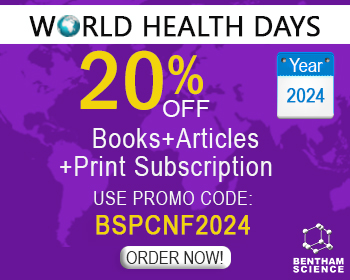Abstract
Dietary protein is linked to the intestinal microorganisms. The decomposition of dietary protein can provide nutrients for microbial growth, which in turn can ferment protein to produce some metabolites. This review elaborates that the effects of different protein levels and types on intestinal microorganisms and their metabolites fermented by intestinal microorganisms, as well as the effects of these metabolites on organisms. It is well known that intestinal microbial imbalance can cause some diseases. Dietary protein supplementation can alter the composition of intestinal microorganisms and thus regulates the body health. However, protein can also produce some harmful metabolites. Therefore, how to rationally supplement protein is particularly important.
Keywords: Dietary protein, intestinal microorganisms, metabolites, protein fermentation, short-chain fatty acids, amino acids.
[http://dx.doi.org/10.1038/nature11234] [PMID: 22699609]
[http://dx.doi.org/10.1152/ajpgi.00048.2011] [PMID: 22016433]
[http://dx.doi.org/10.1016/j.suc.2011.05.001] [PMID: 21787967]
[http://dx.doi.org/10.1111/j.1439-0396.2007.00788.x] [PMID: 19386015]
[PMID: 12889727]
[http://dx.doi.org/10.1016/j.ijfoodmicro.2011.01.002] [PMID: 21276631]
[http://dx.doi.org/10.1016/j.foodchem.2009.12.045]
[http://dx.doi.org/10.1080/1745039X.2014.932962] [PMID: 24979393]
[http://dx.doi.org/10.1146/annurev.physiol.66.032102.144149] [PMID: 14977407]
[http://dx.doi.org/10.2174/138161207780414287] [PMID: 17430188]
[http://dx.doi.org/10.1146/annurev-animal-022513-114113] [PMID: 25384149]
[http://dx.doi.org/10.2741/4669] [PMID: 29293459]
[http://dx.doi.org/10.1016/j.phrs.2012.11.005] [PMID: 23183532]
[http://dx.doi.org/10.1080/19490976.2018.1445957] [PMID: 29543545]
[http://dx.doi.org/10.1080/19490976.2018.1448741] [PMID: 29533125]
[http://dx.doi.org/10.1080/19490976.2017.1408763] [PMID: 29227180]
[PMID: 30556775]
[PMID: 29420132]
[http://dx.doi.org/10.1080/19490976.2017.1387343] [PMID: 28976243]
[http://dx.doi.org/10.1080/19490976.2018.1465157] [PMID: 29667480]
[http://dx.doi.org/10.1080/19490976.2017.1406584] [PMID: 29144833]
[http://dx.doi.org/10.1080/19490976.2018.1448742] [PMID: 29543557]
[http://dx.doi.org/10.1080/19490976.2017.1405209] [PMID: 29157127]
[http://dx.doi.org/10.1080/19490976.2017.1395122] [PMID: 29135334]
[http://dx.doi.org/10.1080/19490976.2017.1379637] [PMID: 28914591]
[http://dx.doi.org/10.1080/19490976.2017.1361092] [PMID: 28786749]
[http://dx.doi.org/10.1002/mnfr.201100542] [PMID: 22121108]
[http://dx.doi.org/10.1080/19490976.2018.1451276] [PMID: 29672211]
[http://dx.doi.org/10.1080/19490976.2017.1421886] [PMID: 29494278]
[http://dx.doi.org/10.1080/19490976.2017.1378291] [PMID: 28914579]
[http://dx.doi.org/10.1080/19490976.2018.1429878] [PMID: 29381406]
[http://dx.doi.org/10.1080/19490976.2018.1448354] [PMID: 29533126]
[http://dx.doi.org/10.1080/19490976.2017.1361093] [PMID: 28767339]
[http://dx.doi.org/10.1080/19490976.2017.1421886] [PMID: 29494278]
[http://dx.doi.org/10.1080/19490976.2017.1387344] [PMID: 28985140]
[http://dx.doi.org/10.1080/19490976.2018.1465158] [PMID: 29667487]
[PMID: 30589376]
[http://dx.doi.org/10.1080/19490976.2017.1361091] [PMID: 28806140]
[http://dx.doi.org/10.1080/19490976.2018.1447291] [PMID: 29517960]
[http://dx.doi.org/10.1080/19490976.2017.1362526] [PMID: 28806147]
[http://dx.doi.org/10.1038/srep43412] [PMID: 28252026]
[http://dx.doi.org/10.1007/s12562-011-0365-4]
[http://dx.doi.org/10.1079/ASC200643]
[http://dx.doi.org/10.1111/j.1439-0396.2012.01284.x] [PMID: 22416941]
[http://dx.doi.org/10.2527/jas.2006-076] [PMID: 17093226]
[http://dx.doi.org/10.1017/S000711451000231X] [PMID: 20609265]
[http://dx.doi.org/10.1126/science.1206025] [PMID: 21596954]
[http://dx.doi.org/10.1126/science.1124234] [PMID: 16741115]
[http://dx.doi.org/10.1007/s00726-006-0477-9] [PMID: 17146590]
[http://dx.doi.org/10.1111/j.1574-6968.1986.tb01934.x]
[http://dx.doi.org/10.1111/j.1365-2036.2007.03562.x] [PMID: 17973645]
[http://dx.doi.org/10.1016/j.exppara.2011.05.019] [PMID: 21627965]
[http://dx.doi.org/10.1016/j.jnutbio.2010.07.009] [PMID: 21167700]
[http://dx.doi.org/10.1093/jn/134.2.479] [PMID: 14747692]
[http://dx.doi.org/10.1093/ajcn/31.10.S216] [PMID: 707376]
[PMID: 11709869]
[http://dx.doi.org/10.1093/ajcn/72.6.1488] [PMID: 11101476]
[PMID: 9818780]



























